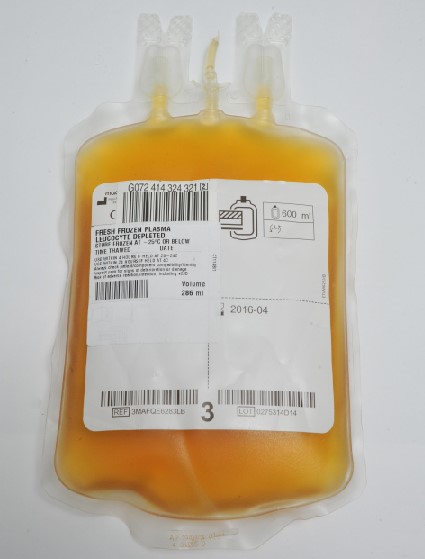One of the primary MedMalReviewer concerns in this case is her anticoagulation reversal. The doctor chose to give 5mg vitamin K subcutaneously as the only initial reversal agent. It was only after her mental status declined many hours later that 4 units of FFP were given.
Vitamin K
Most sources recommend 5-10mg IV vitamin K for serious bleeds (source via SciHub). While this patient’s dose was within that range, from my experience most physicians will choose the higher end of the range given the potential for life-threatening complications from a traumatic intracranial bleed.
Additionally, the dose was given subcutaneously. Practice recommendations from the AHA indicate that subcutaneous reversal is unpredictable, slow, and often ineffective.
Ideally, 10mg of vitamin K would have been given via slow IV push.
However, even with an ideal dosing and route, vitamin K reversal is measured over the course of hours if not days.
This patient continued to bleed for multiple hours because she had been given ineffective reversal that would not even have an effect until the next day. Despite rapid diagnosis and being admitted to a hospital, her initial treatment was inadequate.

There is a possibility that had she been given FFP initially (as recommended by every major anticoagulation reversal guideline), she may not have suffered a worsening bleed, required a surgery, or suffered a permanent disability.
Transfer Decision
Discussion of the transfer decision is ripe with hindsight bias, but in the opinion of MedMalReviewer, a patient on anticoagulation with a head bleed should be in a facility with immediate neurosurgicial capability.

Every transfer takes hours, even with the best of intentions and a flight crew standing ready to move a patient. Waiting for a patient to deteriorate before they are transferred is a recipe for catastrophe.
Many subdural hematomas do not end up requiring surgery, but enough do that it seems irresponsible to leave this patient hours away from appropriate intervention (especially without proper anticoagulation reversal).
Communication
As in many malpractice lawsuits, there were several failures of communications.
The neurosurgeon mentions in his deposition that he thought he told the general surgeon to talk to the family about the risks of staying at the original hospital. This suggestion apparently was not clearly registered by the general surgeon, as there was no discussion with the family.

The plaintiff’s attorney latched onto the fact that the family was not warned that there was no neurosurgeon present. The initial lawsuit filing included allegations of negligence in that he failed to “advise the patient and her family that there was no neurosurgical capability or availability at the hospital”.
Having this discussion and documenting it in the chart would have likely contributed to both surgeon’s defense.
A final key area of failed communication was between the general surgeon and the ICU nursing staff. By 1:04am, the nurses had noted worsening mental status and vomiting. Their notes indicate the doctor was told about the patient’s declining exam and that the nurse requested a head CT, but the doctor decided that it could wait until the morning.
In his deposition, the doctor would later state that he was unaware of these issues. It is difficult to argue with the nurse’s real time documentation, but the point is not to take sides. It is quite clear that there was a miscommunication that led to delays in the patient’s care.
Clear communication is critical in medicine, and failures often lead to medical malpractice cases.
Take home points:
– Document a differential and note several related complications you feel are unlikely based on the history and exam.
– Vitamin K 10mg IV should be given for head bleeds.
– Life-threatening bleeds on anticoagulation require aggressive reversal, vitamin K alone is not enough.
– Communication among medical staff is critical.
– Carefully consider an experienced nurse’s suggestion.
